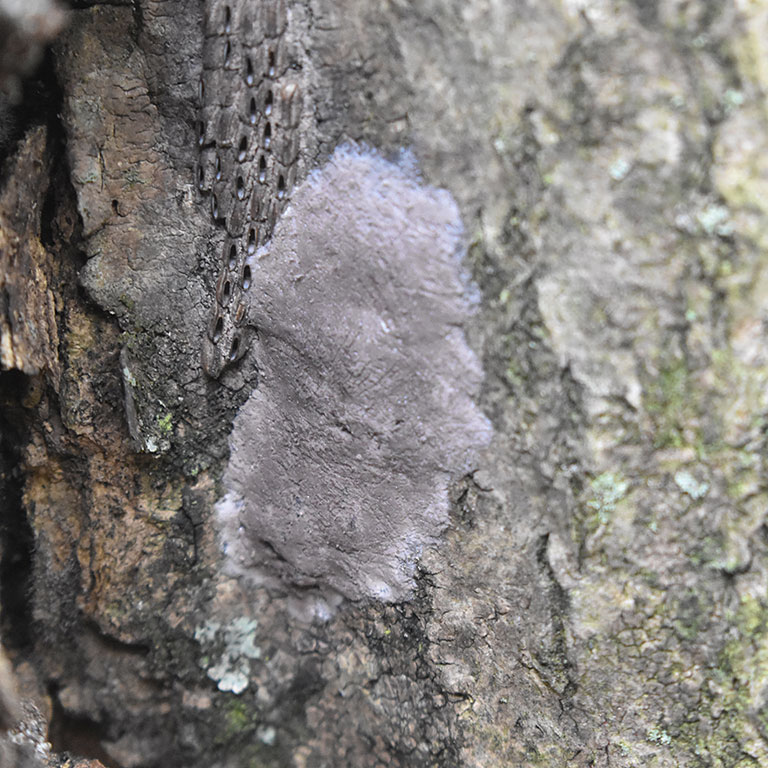NNadir
NNadir's JournalMaking the Case for Sewage Sludge Treatment via Pyrolysis
The paper to which I'll refer in this brief post, a "perspective" as opposed to a research paper, is this one: Pyrolysis Solves the Issue of Organic Contaminants in Sewage Sludge while Retaining Carbon—Making the Case for Sewage Sludge Treatment via Pyrolysis (Wolfram Buss ACS Sustainable Chemistry & Engineering 2021 9 (30), 10048-10053).
I spend a lot of time thinking about sewage sludge because human fecal waste, even treated sewage sludge as well as untreated fecal matter, is a major contributor to morbidity and mortality on this planet.
An excellent and fascinating book, which I read quite a number of years ago on this topic - it is nontechnical and for popular audiences - is The Big Necessity: The Unmentionable World of Human Waste and Why It Matters by Rose George. I recommend it highly to anyone interested in a sustainable world and justice.
In addition the World Health Organization has several websites devoted to the death toll associated with untreated fecal waste.
Many toxic compounds have found their way into treated sewage sludge as a result of pollution, the use of "personal care" products, pharmaceuticals and contaminants in foods. If sewage sludge is used as a fertilizer, seriously toxic compounds are subject to uptake by plants.
However a critical component for the survival of agriculture, phosphorous, currently obtained by mining and thus subject to depletion, is found in significant concentrations and thus represents an opportunity for some level of circularity.
I am a long term advocate of pyrolytic treatment of organic wastes, and was pleased to come across this nice review with lots of references.
From the text:
Composting and anaerobic digestion are unable to sufficiently remove or degrade organic contaminants from wastewater solids for safe recycling.(9−11) Incineration oxidizes and degrades contaminants but also results in loss of carbon and some nutrients.(12) Landfilling of sewage sludge is already banned in many countries in the EU.(13) Therefore, with mandatory recovery of phosphorus from wastewater now in legislation in Europe,(14−16) innovation in sewage sludge treatment is urgently needed.
Heating sewage sludge at elevated temperatures (∼300–800 °C) in an oxygen-free atmosphere in a process called pyrolysis, converts carbon in the feedstock material into a form stable for centuries(17) and retains potassium, calcium, magnesium, and phosphorus.(18) Furthermore, recently it was demonstrated that spiking sewage sludge with low levels of potassium (2–5%) prior to pyrolysis can make–the typically unavailable–phosphorus water-extractable and hence plant-available.(21) The benefits of using sewage sludge biochar in agriculture for soil improvement and nutrient provision have been highlighted in several reviews.(2,19,20)
Incineration degrades organic contaminants with high efficiency and is the method of choice for removal of organic contaminants from solid materials.(12,22,23) Pyrolysis, however, is not widely accepted as a method for contaminant removal from sewage sludge. In the recent Joint Research Centre (JRC) report (public consultation ended 02/2021) “Technical proposals for selected new fertilising materials under the Fertilising Products Regulation (Regulation (EU) 2019/1009)” by the European Commission (STRUBIAS report), input materials for pyrolysis eligible for the production of fertilizers in the European Union were defined.(24) Sewage sludge was excluded as a feedstock material in the report since “the knowledge base of studies that assessed the proportional removal of specific organic pollutants is limited and restricted to only a few organic pollutants”,(24) and the authors recommended additional research.
In the current study, I evaluate the available evidence on removal of organic contaminants from sewage sludge via pyrolysis (summarized in Table 1) and compare the environmental implications of pyrolysis treatment with incineration. I conclude that the data are supporting pyrolysis as a technology to produce safe sewage sludge-derived biochar fertilizer...
A table from the text showing data collected from various publications on the effectiveness of heat in the destruction of toxins found in sewage:


The author continues:
As clearly outlined in this manuscript, pyrolysis of sewage sludge removes and destroys organic contaminants. While results from small-scale batch units cannot always be transferred to large-scale, commercial production units, data reported in this manuscript are based on studies that utilized a variety of pyrolysis unit of different scale. Furthermore, previous work demonstrated that key biochar properties were comparable in biochars produced with small, lab-scale batch units and pilot-scale, continuous units.(58,59)...
...and later...
The moisture content of sewage sludge and biosolids (treated sewage sludge) can be >95%,(63) and drying prior to thermal treatment is necessary. Drying is a very energy intensive step—it can consume 5-times more energy than is needed for the pyrolysis process—therefore the treatment of wet sewage sludge via pyrolysis requires external energy addition.(63−66)
If the energy is produced using dangerous fossil fuels, the energy for this process would drive climate change as much as the failure of so called "renewable energy" is driving it.
Many of my considerations in recent years however have been addressed at heat networks driven by nuclear heat. It is clear that in this case, pyrolysis could go a long way to solving a critical health and environmental risk.
Have a nice weekend.
The Effect of Mixing Alcohol and Caffeine in the Presence of Carbon Dioxide.
I don't generally drink hard liquor, and limit myself to wine and beer, and then in moderation, but I do have a caffeine "problem." However, recently, because everybody said I should, I watched "The Big Lebowski," and although I didn't actually get it until I rewatched "The Big Sleep," at the advice of a correspondent I watched while consuming a "White Russian," a concoction of heavy cream, vodka and Kahlua, a coffee liqueur.
I don't actually have a sense of humor, but if I did, with this in mind, mixtures of caffeine and ethanol that might have been carbonated (but wasn't), I might find this paper, across which I stumbled funny in a way: The Polar Cosolvent Effect on Caffeine Solvation in Supercritical CO2–Ethanol Mixtures: A Molecular Modeling Approach (Ioannis Skarmoutsos, Ioannis D. Petsalakis, and Jannis Samios Industrial & Engineering Chemistry Research 2021 60 (31), 11834-11847.)
It begins with a little lecture on the possible health consequences dangerous drug (in this case not alcohol) to which I'm addicted, although the text notes I'm not alone:
The low solubility of polar substances in nonpolar SCFs, such as SC CO2, is an obstacle to the development of viable extraction operations using supercritical CO2. Although SC CO2 is quite efficient for the selective extraction of caffeine,(16) the solubility of caffeine in this solvent is lower than that in liquid organic solvents.(11,17−19) Due to this, the use of a large amount of CO2 during the extraction process is required, causing a substantial increase in operating costs...
The solution?
Just add alcohol...
If I had enough of a sense of humor to find this amusing - I don't - it would be funny in a dorky kind of way, which would not be a problem for me, because some people who have been supercritical of me have noted, with some element of truth, that I am a dork.
Cool paper though...
There's a lot of sophisticated molecular modeling in this paper which concludes as follows:
This means that if you ever find yourself watching "The Big Lebowski" while consuming a White Russian and still plan on sleeping that evening, stick the thing in a can of pressurized carbon dioxide and heat it gently.
Another alternative would be not to watch "The Big Lebowski," and/or not have a White Russian while doing so.
On the serious side, any technology that minimizes the use of dichloromethane and hexane, which simultaneously sequestering carbon dioxide for use is a good thing.
I absolutely love learning about supercritical carbon dioxide in particular, and supercritical fluids in general.
As for "The Big Lebowski" it was mildly amusing and might have been funny even, at least if I had a sense of humor, regrettably though, I don't.
My Wife Has Correctly Been Pointing Out How Stupid I Am.
My wife has been going to estate sales trying to find furniture for the cat to claw to pieces, since the cat has completely destroyed the current furniture. (It seems to take the cat about 2 years to complete total destruction.)
My wife enjoys going to estate sales and garage sales in general, and sometimes picks up useful things.
I'm not all that much into that kind of stuff, but as there is a hurricane in the area, I went with her today to an estate sale, more or less on the spur of the moment, in the interest of keeping her safe in this weather. She wanted to go because she wondered if a couch and love seat might still be there, something she told me was a long shot, since most of that stuff on a weekend is gone almost immediately on the opening.
This was true in the estate sale to which we went, but we perused the place anyway. The guy who passed on had a very nice library, and one of the first things I always do when invited into a stranger's home is to check out the books on their shelves to tell me about who the person is. (If they don't have any books at all, it also tells me who the person is.) This guy was dead, of course, but I found it interesting to think about who he was. He apparently had a strong interest in late 20th century history politics, and had several books on major political figures from that era who have more or less lapsed into some obscurity; the titles suggested the dead guy was a moderate Democrat of the era.
Among his collection of books were books from an earlier era, a biography of Grant, McFeeley's which I already had, and a book that I've sometimes thought I should read some day, Edmund Morris's Theodore Rex, a biography of Theodore Roosevelt. My wife came into the guy's library, and I remarked on that I'd always wanted to read that book and she noted my birthday was coming up, and suggested that I ask the person running the estate sale if the books were for sale. The answer was "yes" and the price was announced as $2/book.
My wife, who is on a quest for me to throw books away, since they represent a rather massive amount of clutter in our home with our shelves stuffed to capacity, generously said, space considerations aside, that I should buy the book at $2. While we were chatting, I remarked that the dead guy may have been a historian, and then we came across a 5 volume set (6 volumes in 5 bindings) of James Boswell's Life of Samuel Johnson, and I remarked that this work was a classic in biography, important in the intellectual history of the Western World. At that point, we pulled an adjacent volume off the shelf, which proved to be a copy of the dead guy's 1959 Princeton University thesis on the subject of Boswell's biography. So my wife says of the five volumes, "Do you want these too?" and after some desultory hemming and hawing I confessed I would like to own that set.
So we go out to the sale manager, give her twelve dollars for the six books - we didn't take the thesis although perhaps we should have done so - and I start giving the sale manager a lecture on the fact that the dead guy must have been quite an intellectual since he wrote his thesis on them, and that the set seemed to date from the 1950's.
The agent then remarks, "Maybe these are first editions! Maybe they're worth thousands of dollars!" and pulls out her cell phone and starts searching around the internet for the title. (A first edition would date from the 18th century; which I mumbled to the agent.)
I then mutter, "Well, I'm not paying thousands of dollars for these books."
Now it happens that there are remaindered editions, for modern college classes, of this book that sell on Amazon for 10 dollars, sometimes even less, and happily, the agent came across these, while muttering about a case where a rare book in an estate sold for huge amounts of money, and I'm rolling my eyes, and finally, since she couldn't find reference to these editions, she gave up, kept the $12 dollars and we ska doodled out of the house with our six books.
I remarked that I was pretty stupid in that sale, and almost lost it, and my wife enthusiastically agreed, pointing out several times that I need to keep my mouth shut, repeating the point several times on the ride home, which was longer than usual because of flooded roads.
Then my wife and I started talking about the fact that the books may, in fact, be worth far more that we paid for them, and my wife began speculating that perhaps when I retire - something I have successfully avoided doing - I should become a rare book dealer. (This may be a ploy to make me get rid of my books.)
So when we got home, I went on the internet, using more information from inside the book jacket.
It appears these editions are worth somewhere between $400-$700. They are not for sale however. I'm keeping them. I called up to my son and said, "Hey, your mother bought me $500 worth of books for my birthday. How do you plan to match that?"
I'm a fool. I almost blew it. Sometimes it's better to say nothing at all.
Sounds like a description of the most recent Presidential debate.
I kind of enjoyed this psychologist's comments, without mentioning Mr. Trump and President Biden, but, I think, applicable there and beyond.
I'm losing 3-2.
My son killed three spotted lantern flies in the last week and I've only killed two.
He's declared that the winner has to buy the loser a bottle of scotch. Fat chance, kid. You can't kill spotted lantern flies when you're drunk.
The spotted lantern fly is an invasive species that kills trees. It's native to Vietnam and China, but has found its way into Eastern Pennsylvania and Western New Jersey. They are a serious threat to forests and to agriculture.
They are beautiful looking insects, with a propensity to jump in their nymph form, although you can exhaust them by making them jump several times as you chase them down.
Spotted Lanternfly

Figure 1: Adult spotted lanternfly

Figure 2: Young juvenile spotted lanternfly.

Figure 4: Older juvenile spotted lanternfly.

Figure 6: Spotted lanterfly egg mass.
NIST reserves the right to charge for this database in the future.
Your government does great things for science, but they reserve the right to charge you in the future:
NIST Chemistry Webbook
Finally, as an old man, I am appreciating NIST.
Charlie Haden on Bass.
Only Charlie Haden could do this.
The best communist bass player from Iowa in the world.
Seriously, a giant. My favorite part of his career, if one has to choose a favorite, was his years with Keith Jarrett, Dewey Redman, and Paul Motion.
Something a little outside mainstream jazz, as only Charlie Haden could do it:
Mexico City was like another world.
Profile Information
Gender: MaleCurrent location: New Jersey
Member since: 2002
Number of posts: 33,518